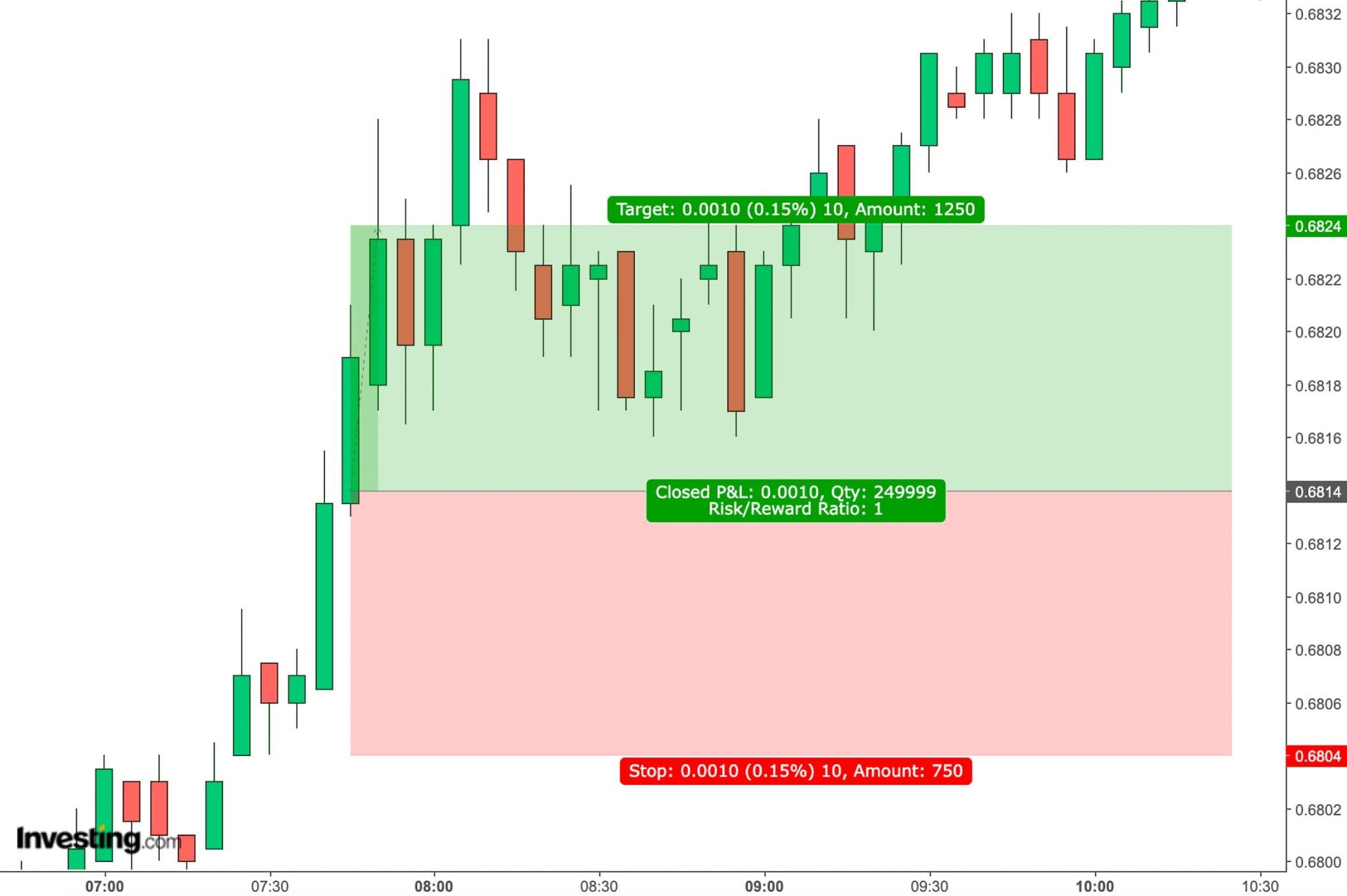Forex Trading in Australia



Despite being a fairly small country in terms of population, forex trading in Australia is booming with daily volumes averaging $150 billion according to the latest survey from the Bank for International Settlements.
Australia’s dollar (AUD) also consistently ranks among the top 10 most traded currencies worldwide. This can be attributed to the country’s robust economy, stable political environment, and abundant natural resources.
Are you ready to start forex trading in Australia? Here’s a beginner’s guide to get you started.
Quick Introduction
- Forex trading involves exchanging one currency for another, aiming to profit from fluctuations in their relative value.
- The most commonly traded pair involving the AUD is the AUD/USD, which is consistently among the most traded currency pairs globally.
- Forex trading in Australia is regulated by the Australian Securities and Investments Commission (ASIC), a ‘green tier‘ body that enforces strict guidelines to protect traders.
- The Sydney trading session (07:00 to 16:00 AEST) is Australia’s home session, so liquidity in the AUD is high during this period.
Best Forex Brokers in Australia
We have reviewed 224 brokers as of April 2025 and found these 4 to be the best for Australian forex traders:
All Forex Brokers in Australia
How Does Forex Trading Work?
Forex trading in Australia involves speculating on currency exchange rates. The first currency in the listing is the base currency, and the second is the quote currency.
The buying price is known as the ‘bid’, and it refers to the amount of the quote currency needed to purchase the base currency. The selling price is called the ‘ask’, and works the other way around.
You might buy the Australian dollar against the New Zealand dollar (AUD/NZD), hoping its value will increase relative to the New Zealand dollar.
However, just because you live in Australia, doesn’t mean you must trade the Australian currency. Day traders often focus on majors like the EUR/USD and USD/JPY owing to their deep liquidity, which typically results in reliable execution and low trading fees.
To begin forex trading in Australia, you’ll need to:
- Open an account with a forex broker: we recommend choosing an ASIC-regulated firm.
- Deposit funds: consider opening an AUD trading account to minimize conversion fees.
- Execute trades: your broker should provide a desktop, web, and mobile forex app for placing trades.
Is Forex Trading Legal In Australia?
Forex trading is legal in Australia and regulated by the highly regarded ASIC, which oversees all financial markets to ensure fair trading practices and protect consumers.
To operate legally, forex brokers must hold an Australian Financial Services (AFS) license issued by ASIC. The regulations are designed to provide a transparent and secure trading environment.
ASIC has overseen over $17.4 million in compensation to retail investors by OTC derivative issuers.
Traders in Australia can engage in forex trading through licensed providers, and they are protected under strict consumer protection laws, including requirements for brokers to segregate client funds and comply with anti-money laundering (AML) policies.
ASIC also limits leverage for retail traders to mitigate risk. Since 2021, the maximum leverage for major currency pairs like AUD/USD is capped at 1:30. For non-major currency pairs like AUD/NZD, it is 1:20.
This restriction reduces the risk of significant losses for traders using excessive leverage – a popular tool with forex day traders.
Is Forex Trading Taxed In Australia?
Yes, forex trading is taxed in Australia. The Australian Taxation Office (ATO) determines how forex trading profits are taxed based on whether you are an investor or a professional forex trader.
Any profits or losses are subject to capital gains tax (CGT) if you are trading forex as an individual investor. If you hold the position for over 12 months, you may qualify for a 50% CGT discount on your gains.
On the other hand, if you are considered a professional trader operating as a business, your profits and losses are treated as ordinary business income. This means that all your trading profits are added to your taxable income and subject to your personal income tax rate (19% to 45%).
Losses from forex trading are tax-deductible. Investors can offset their capital losses against capital gains, while traders can offset losses against their business income.
It is crucial to maintain accurate records of all forex your trades. I also recommend consulting with a tax professional to ensure compliance with the latest ATO regulations.
When Is The Best Time To Trade Forex?
To maximize trading opportunities in Australia, focusing on periods of high liquidity and market activity is generally recommended. Here are the prime times to consider:
- Sydney Trading Session (07:00 to 16:00 AEST): As Australia’s home session, liquidity in the AUD is naturally high. However, the volume picks up later in the day.
- Tokyo-Sydney Overlap (10:00 to 17:00 AEST): The Tokyo session overlaps with the Sydney session, offering increased liquidity and better trading opportunities. This overlap often enhances AUD/JPY and AUD/USD activity.
- London-Sydney Overlap (18:00 to 20:00 AEST): Although this window is brief, it coincides with the opening of the London session, which significantly increases volume and volatility for AUD-related pairs.
- London-New York Overlap (23:00 to 03:00 AEST): This is the most liquid period for global forex markets, but as it’s late at night in Australia, awake traders benefit from high volatility, especially for AUD/USD.
A Trade In Action
To demonstrate how forex trading in Australia works in practice, let’s examine a day trade I executed on the AUD/USD pair:
Event Background
The Australian Bureau of Statistics announced a surprisingly positive jobs report, showing a drop in unemployment rates and an unexpected increase in full-time employment figures.
This announcement came at a time when the Australian economy was showing signs of resilience despite global uncertainties.
As a result, the Australian dollar (AUD) rallied against the US dollar (USD), attracting my attention for a potential day trade opportunity on the AUD/USD currency pair.
Economic indicators like these often increase investor confidence, prompting traders to act quickly to capitalize on market movements.
Trade Entry & Exit
After analyzing the market reaction to the announcement, I prepared to enter a trade. I closely monitored the price action on the AUD/USD chart, seeking confirmation of the bullish trend.
As the price broke above a significant resistance level, I entered a long (buy) position at 0.6814. To manage my risk effectively, I set a stop-loss just below the previous support level at 0.6804.

Given the positive momentum from the economic data, I anticipated that the price would continue to rise in the short term, driven by increased demand for the AUD from both retail and institutional traders.
As the day progressed, the AUD/USD pair continued to rise, reflecting the optimism in the market. I monitored the trade closely and noticed that the price reached my target of 0.6824, which aligned with a 1:1 risk/reward ratio (risking 10 pips to make 10 pips).
Once the price hit this level, I decided to exit the trade and secure my profits, yielding a 10-pip gain.
Reflecting on this forex day trade, I realized that taking advantage of the positive Australian jobs report was a timely decision that paid off.By staying informed about economic announcements and their potential market impact, I was able to execute my strategy effectively.
Bottom Line
Forex trading in Australia is a well-regulated and thriving market, making it a significant player on the global stage. Regulated by ASIC, the market operates under strict rules, ensuring trader protection, transparency, and the proper conduct of brokers.
Traders benefit from well-established financial infrastructure, time-zone advantages, and a favorable regulatory environment. However, you face restrictions like capped leverage and clear tax obligations under the Australian tax system.
Start trading foreign currencies by opening an account with one of DayTrading.com’s trusted forex brokers in Australia.
Recommended Reading
Article Sources
- Australian Securities and Investments Commission (ASIC)
- Most Traded Currencies - Wikipedia
- Triennial Central Bank Survey - BIS
- Australian Financial Services (AFS) license
- ASIC oversees more than $17.4 million in compensation to retail traders - ASIC
- Australia Taxes on Personal Income - PwC
- Australian Bureau of Statistics
The writing and editorial team at DayTrading.com use credible sources to support their work. These include government agencies, white papers, research institutes, and engagement with industry professionals. Content is written free from bias and is fact-checked where appropriate. Learn more about why you can trust DayTrading.com



